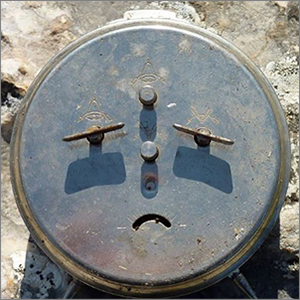
“Out of clutter, find simplicity. From discord, find harmony. In the middle of difficulty lies opportunity.” - Albert Einstein
Imagine this.
You are a high school student at a museum doing research for your PBL project. Your team enters the first exhibit, explores and writes down findings, then excitedly but quietly shares your discoveries. You are stoked about this PBL project! As you all are conversing, a security guard walks to your team and shouts, “Move it boys! We don’t want no trouble out of you people today.”
The atmosphere becomes tense as many hear the loud rant of the security guard. You try to explain your class project to him but the guard dismisses your voice and continues to be rude. Your team decides to move to the next exhibit, not to cause a bigger scene. As your group refocuses and continues the work, the guard appears to focus his attention only on your group. You’ve been in this situation before and as a group, you all decide to wrap up your research earlier than expected.
The security guard follows your team back to the front desk. You ask for the museum’s manager to file a complaint. You are ignored. You ask several other employees to get the manager but no one listens. The security guard believes you are making a scene and sternly calls for you all to leave. You look around the lobby searching for someone to help. Not one customer or employee offers support. The guard puts one hand to the side of his belt and points to the door with the other hand. You are nervous, especially in this time in which we are living. As your group leaves, you hear a customer whisper to another customer, “They must have tried to steal something. They are always starting trouble.”
The next day at school, your teacher asks, “What was discovered during research?” Your friend raises his hand and shares, “Well, we were profiled and followed around by this racist rent-a-cop so we didn’t get to complete it.” You are expecting the teacher to show some empathy but instead your teacher deflects and redirects the question to another group. Your words were not important. You are no longer motivated to do the project. That was the day the project stopped.
Believe it or not, this is a true story. Situations like this can halt a motivated student. It may not be to this level of social injustice, but experiences outside of the classroom could very well end up inside the classroom. How do you motivate a student who is demotivated during a PBL project by a experiencing something like this? Here are a few examples I’ve observed and practiced.
Address the Issue
You might be tempted to look past their situation, but don’t dismiss students’ frustrations with what they encounter in the world outside of school during project work. Use it as a teachable moment for all because everyone gets frustrated. One teacher sensed her entire class was frustrated and knew if she didn’t address it, there would be no progress in her PBL project. She had all of her students journal about it inside of Google Classroom using Alice Keeler’s format. She read about some tough realities she wasn’t expecting to read. She gathered every concern and put them on chart paper. The class did a Collective Wisdom protocol to discover ways to address some of the concerns, similar to this example by BIE National Faculty member Alicia Peletz.
At the top of the chart paper was the tough reality. Students provided solutions to fix that anonymous student’s reality. The students had voice and choice to move around and address as many concerns in the amount of time added. Afterwards, the teacher gave them time to go back to their journal entry and write down some solutions to help their troubled reality. The students realized their teacher cared for them as individuals first, which helped the healing process and helped them to refocus academically. After the exercise, many students felt heard and pushed through the content/project.
Help Students Realize They Are Not Alone
After lunch, a teacher discovered N-words written on his whiteboard with permanent ink. Suggestions were made to have class in another room or to cover it up with chart paper. Instead of pretending it didn’t happen, the teacher insisted on having class in his classroom instead. His 5th hour class walked in and saw the racial slurs. Many were visibly upset. Others tried to laugh it off. Instead of teaching his science lesson that period, he opened up sharing his reality many didn’t know. Throughout the discussion, other students opened up about injustices they were experiencing. Students realized they were not alone and couldn’t believe teachers were fighting their same fight. This negative experience turned into an ad-hoc social justice discussion and students were more than motivated to continue the discussion.
Connect With the Community
After you’ve addressed the root source of the demotivation, connect with your community. Put out feelers on social media to help you. One school needed 50 extra dads and posted it on social media. They got more than what they expected. Find community members who have gone through similar struggles. It still takes a village to raise today’s students. From the discord, find the harmony.
Motivate the De-Motivated
Bring the focus of the project back to how the project will help them in life and not just school, which is the goal. Then, provide step by step support to get students back on board. It may take some intrinsic or extrinsic motivators to get them going. It may take someone else, besides you, to be the catalyst. For example, during one PBL project on the Civil Rights Movement, a student’s great-great grandmother came to class to share her experience. She silenced the de-motivated English class as she talked about not being allowed to enter a theater through the front door and climbing a raggedy fire exit stairs to sit in a nasty balcony just to watch the movie, The Godfather. Her story motivated the class in a way the teacher couldn’t. Her voice pierced their souls and brought motivation to the subject.
Let’s go back to that day inside of the classroom.
The next day at school, your teacher asks what was discovered during research? Your friend raises his hand and shares, “Well, we were profiled and followed around by this racist rent-a-cop so we didn’t get to complete it.”
Imagine if the teacher maximizes that opportunity?
Follow Andre Daughty on Twitter at @andredaughty.

